The best DSLRs (or digital single-lens reflex cameras) are those that not only offer excellent image quality, but also give you value for money. DSLRs are likely on their way out with camera makers – particularly Canon and Nikon – now investing most of their resources in their mirrorless lines. But that's not to say they're completely dead in the water. DSLRs are still available to buy and, despite being 'old school', are great alternatives to mirrorless cameras, capable of taking them on in terms of performance. and can likely be found cheaper than ever before.
Unlike mirrorless cameras, DSLRs don't offer the high resolution sensors that have become the hallmark of some high-end full-framers, but what you get instead is rugged reliability, an ergonomic body and plenty of battery power. And, if you're looking for value, then DSLRs remain the cheapest way to get a camera with a viewfinder.
Whether you want a brilliant beginner option or a top-end professional powerhouse, there's a DSLR for you. Choosing which one is best for you, though, will depend largely on what kind of photographer you are, where you are on your creative journey and how far your budget goes.
The very best DSLR cameras in 2021 offer features that are right up there with the top mirrorless models – from class-leading 4K video to image stabilization to cutting-edge connectivity. At the other end of the spectrum, beginners may find the handling and button layout of a DSLR more accessible, while the right DSLR will give hobbyists the performance and versatility they need to grow as photographers – plus the lens options to match.
If you want to learn more about the key differences between DSLR and mirrorless cameras, be sure to read our Mirrorless vs DSLR feature. Already sure that a DSLR is for you? We’ve picked out our favorite DSLR cameras for every type of photographer, at every price level, and listed them below.
Our top pick for the title of best DSLR right now is the Nikon D3500. A perfect choice for beginners, it offers an excellent range of features, unlocks Nikon’s healthy catalogue of lenses, and it’s affordable, too. On the other hand, experienced enthusiasts with deeper pockets will likely favor the Canon EOS 90D – our favorite of the mid-range models, with a high pixel count, top-class image quality and uncropped 4K video to match.
But that doesn’t mean either model is the ideal DSLR for you. Whether you want a world-beating all-rounder, something more basic on a budget, or a camera that’s somewhere between the two, the list below is where to look. Read to the end and you’re sure to find a DSLR that ticks all of your boxes.

The best DSLR cameras in 2021:
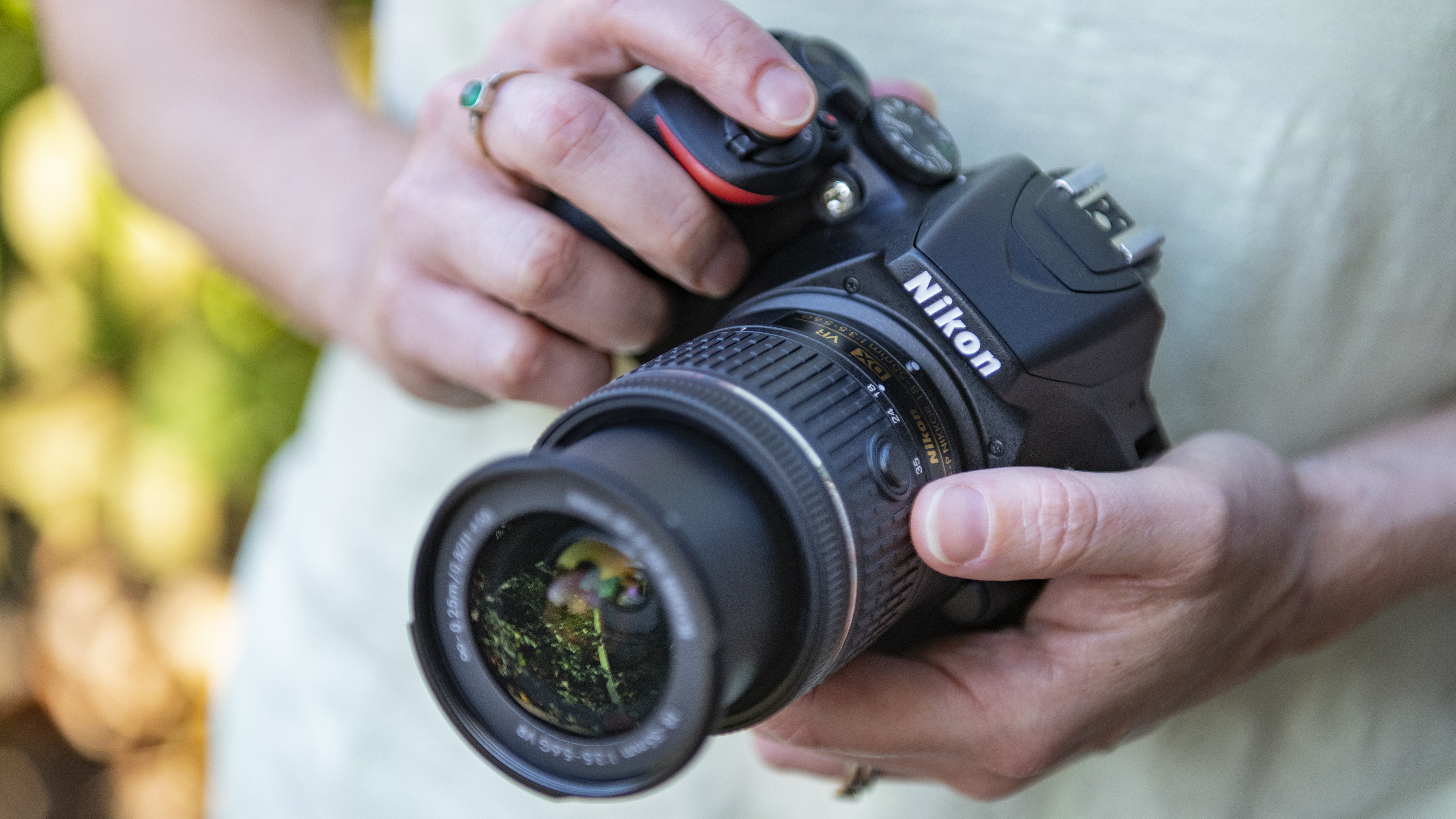
At the opposite end of the spectrum to some of the full-frame DSLRs on this list, the Nikon D3500 is super affordable, has one of the sharpest APS-C sensors out there, and a neat retracting kit lens. A word of warning: there are two versions of this lens, and it's worth spending the extra $20/£20 and getting it with VR, Nikon's image stabilization system.
It's proof that you don't have to pay a fortune to get a great camera, and we say its value for money makes it just as impressive as much more advanced (and much more expensive) alternatives.
The controls are designed to be simple for novices, and in the right hands it's a match for cameras costing far more. If you're looking to get more creative with your photography, and looking for your first DSLR, the Nikon D3500 is certainly hard to beat.
- Read our in-depth Nikon D3500 review

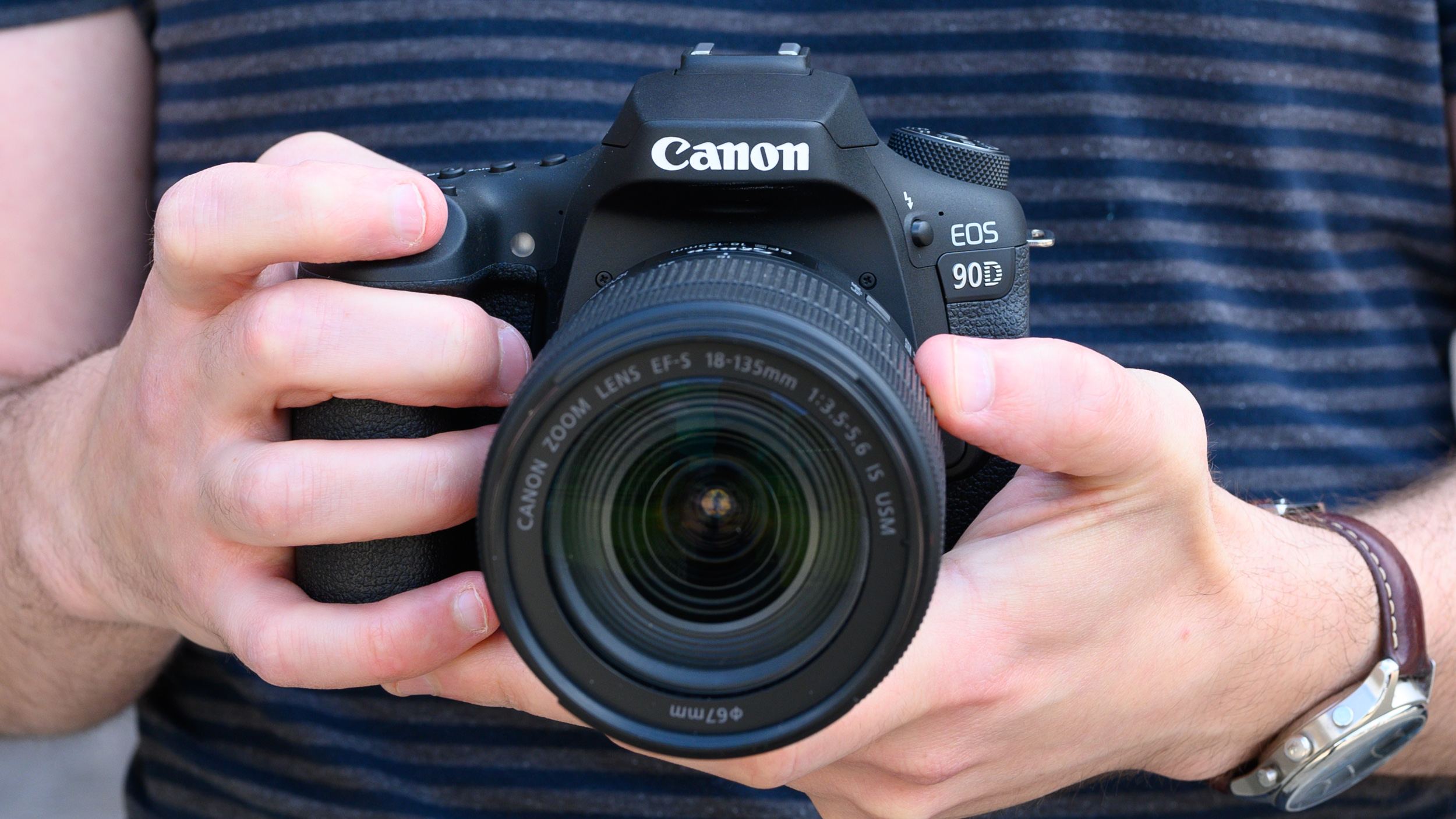
The EOS 90D is quite the step forward for the EOS DSLR line, being the first model of its kind to sport a 32.5MP sensor. Being announced fairly recently, it also suggests that Canon still believes that the DSLR format has some legs.
Helping to split it from the previous EOS 80D is 4K video recording, which is thankfully uncropped, while a fresh processing engine and faster burst shooting also feature. The 1300-shot battery provides far more juice than what you can get from the average mirrorless camera, while protection against dust and water is also welcome to see.
While modern mirrorless cameras, such as Canon's own EOS M6 II that shares the same sensor, rub some of the appeal away from cameras like the EOS 90D, by focusing on improving everything from resolution and burst rate to video and more, the company has made this a strong and versatile camera for anyone that prefers the DSLR shooting experience.
- Read our in-depth Canon EOS 90D review

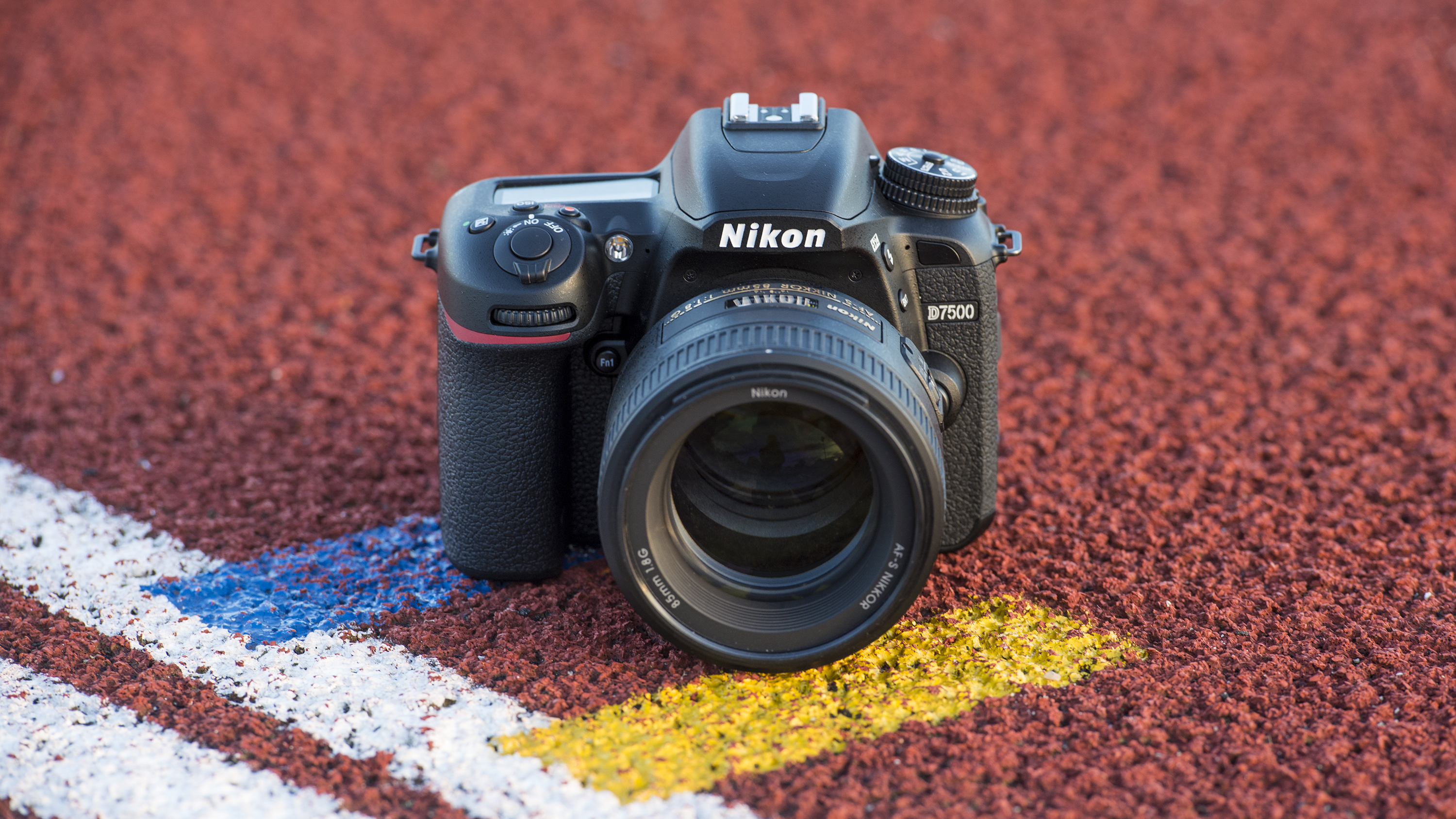
Fancy the Nikon D500 but don't fancy the price tag? Well, if you're prepared to make a few compromises here and there, the D7500 is what you should be looking at. It's packed with the same 20.9MP sensor as its more senior stablemate, and also matches it in offering 4K video recording.
Nikon has also furnished it with the same 180k-pixel RGB metering sensor and the tilting screen on the back is just as large at 3.2 inches in size, although not quite as detailed, and it's all wrapped up inside a weather-sealed body.
On an even tighter budget? There's also the older 24.2MP Nikon D7200, which continues to offer great value – if you can find it on sale.
- Read our in-depth Nikon D7500 review

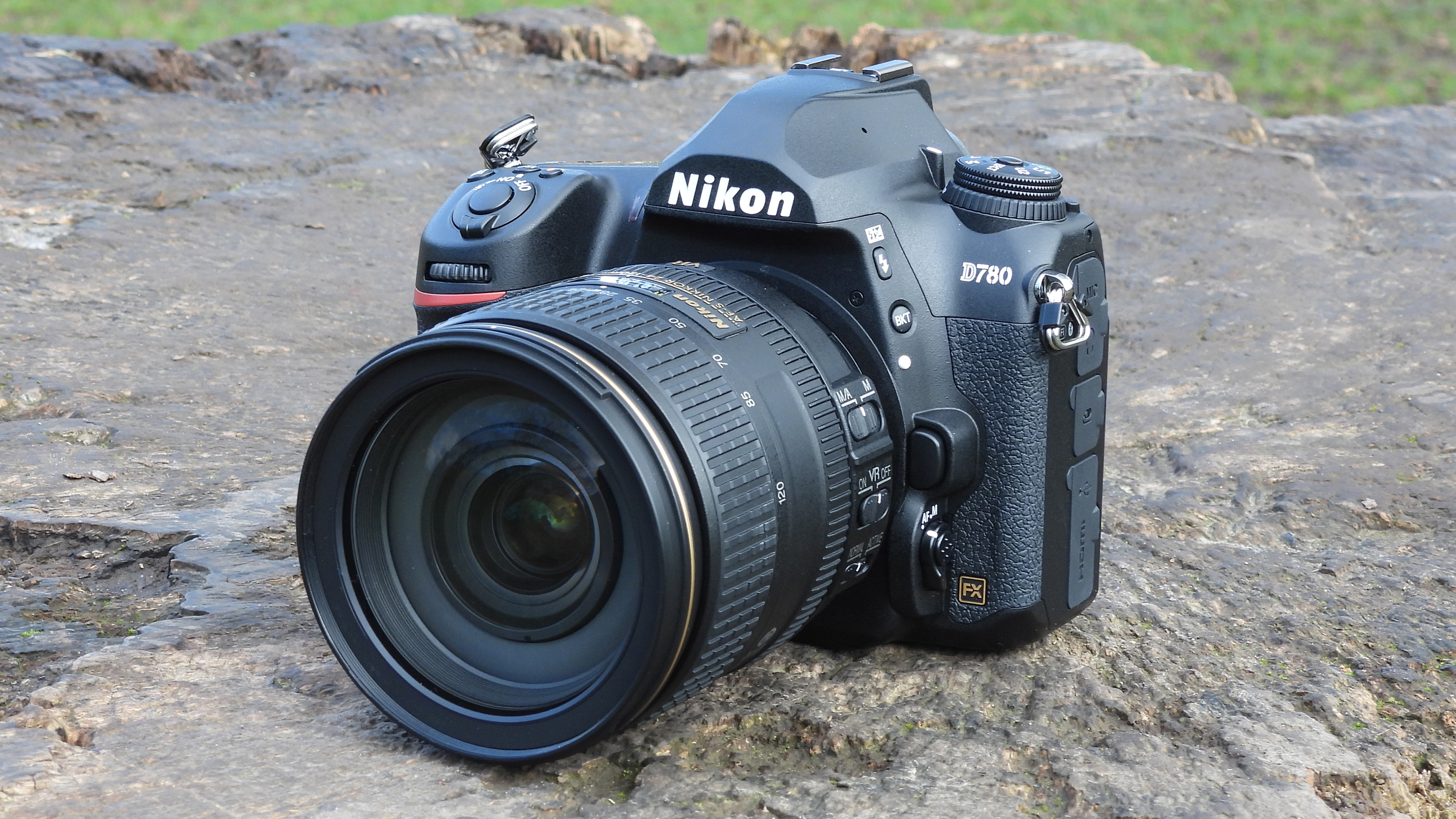
The D780 is effectively a hybrid of a full-frame DSLR and a mirrorless camera like the Nikon Z6. This makes it a fine (if relatively expensive) option for anyone who wants to combine the benefits of both.
Building on the solid foundation of the D750, which will remain on sale (see below), the D780 has the same 273-point on-chip phase-detection autofocus system as the Z6, but also brings an impressive 2,260-shot battery life, if you prefer to shoot through its optical viewfinder.
Image quality is among the best around, while its 4K video skills are boosted by the inclusion of modern features like Face and Eye detection. As a new DSLR, it's currently a little pricey, but if that isn't an issue for you, then it's one of the best full-frame all-rounders you can buy.
- Read our in-depth Nikon D780 review

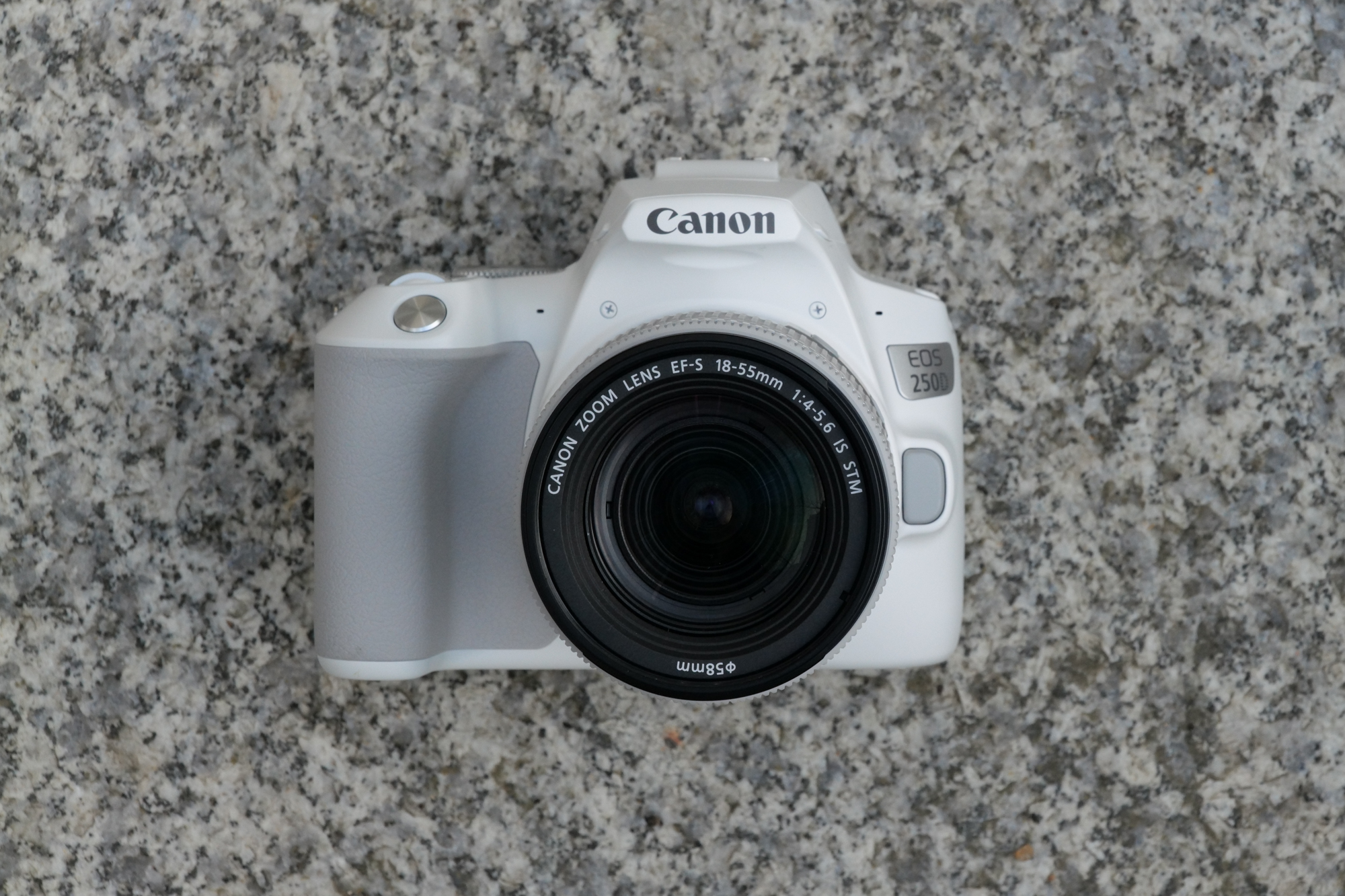
Canon's best budget DSLR, the Rebel SL3 – also known as the EOS 250D outside the US – mixes a strong feature set with great handling, despite its small size. The Nikon D3500 (see no.1) is even smaller still, but lacks this camera's flip-out LCD screen, which is particularly handy if you want to shoot video.
The Rebel SL3 also adds 4K shooting to its now discontinued predecessor, although this is cropped and rolling shutter is often noticeable. Still, it does offer pleasing JPEGs, a superb 1,070-shot battery life and compatibility with a huge range of EF lenses and other accessories that most mirrorless cameras lack.
If those features are top of your camera wishlist, then this beginner-friendly DSLR remains a compelling choice.
- Read our in-depth Canon EOS Rebel SL3 / EOS 250D review

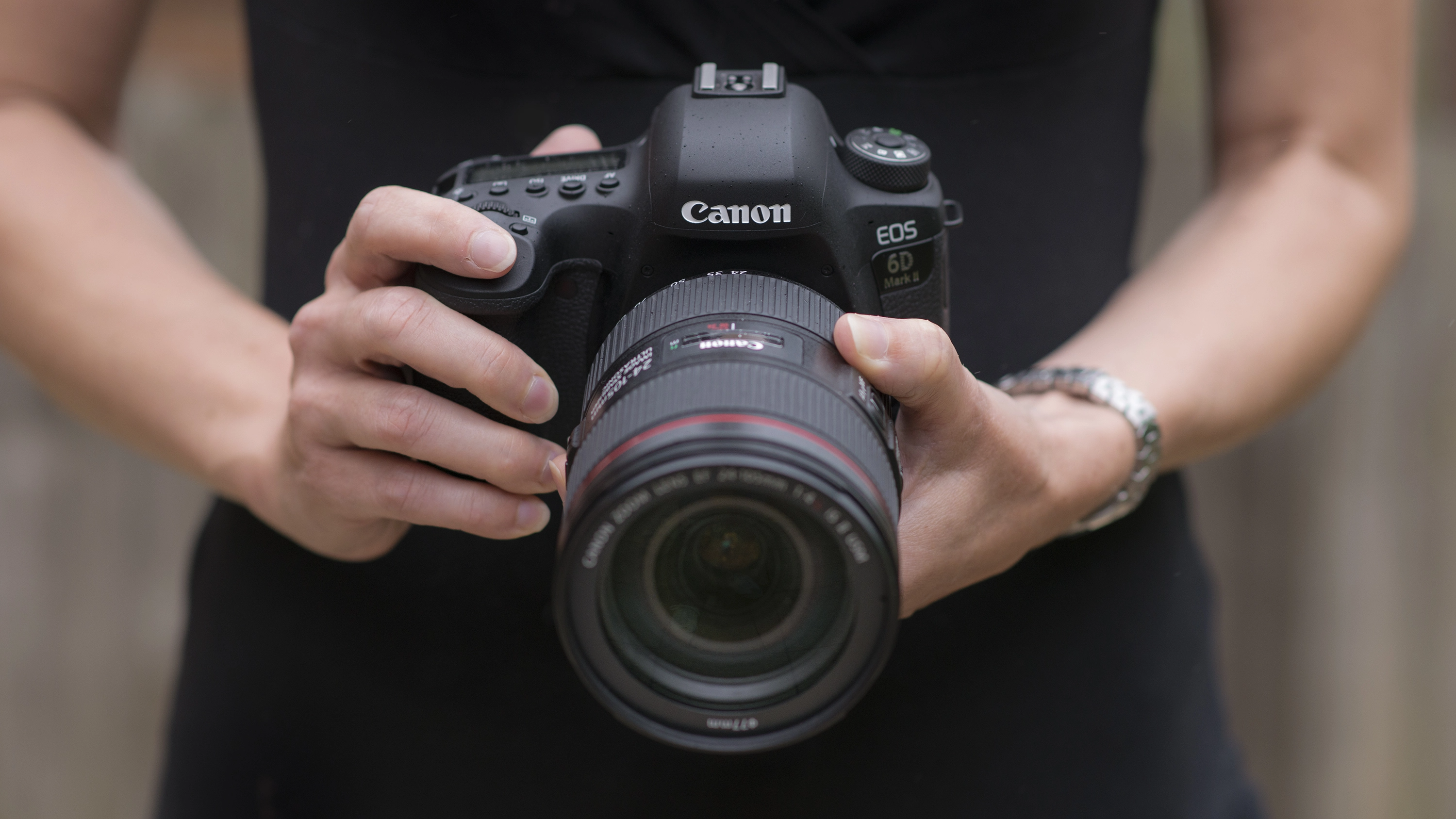
Although it's a full-frame DSLR, the entry-level EOS 6D Mark II is impressively user-friendly. While the chassis can feel rather plasticky, the 26MP sensor housed within is stellar, and offers Canon's trusty Dual Pixel CMOS AF system when using live view mode.
With 45 AF points to choose from and a burst speed of 6.5fps, there's plenty you can capture – including some decent wildlife shots as well. It's not quite fast enough for speedy trackside racing shots, but it does surprisingly well for most anything else.
The rear touchscreen also offers tap-to-focus and tap-to-shoot for anyone missing a joystick, but despite that the 6D Mark II is reliable, produces great results and is still a favorite amongst enthusiast photographers.
- Read our in-depth Canon EOS 6D Mark II review

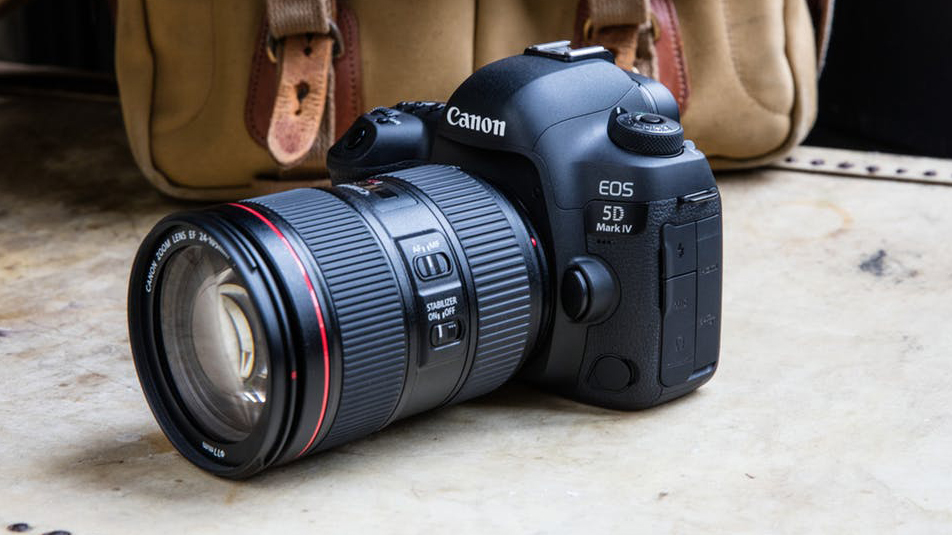
Canon's EOS 5D series of cameras has a rich heritage – the original EOS 5D brought full-frame photography to the masses, the Mark II unleashed Full HD video capture for the first time on a DSLR, and the Mark III became a firm favorite among photographers for doing everything it did so well.
The EOS 5D Mark IV pretty much tweaks and improves on everything before it, with a 30.4MP sensor and advanced 61-point AF system along with 4K video recording. And with a 5D Mark V successor looking increasingly unlikely, it will continue to be one of the most compelling DSLRs at this price point.
Naturally, those 4K video options are a little limited, with the frame-rate topping out at 30fps and no options to shoot in a flat gamma profile. But if you're mainly looking for a powerful DSLR for stills photography, the EOS 5D Mark IV remains a surprisingly modern proposition, considering its age – and the fact that you can still buy it new is a testament to its popularity.
- Read our in-depth Canon EOS 5D Mark IV review

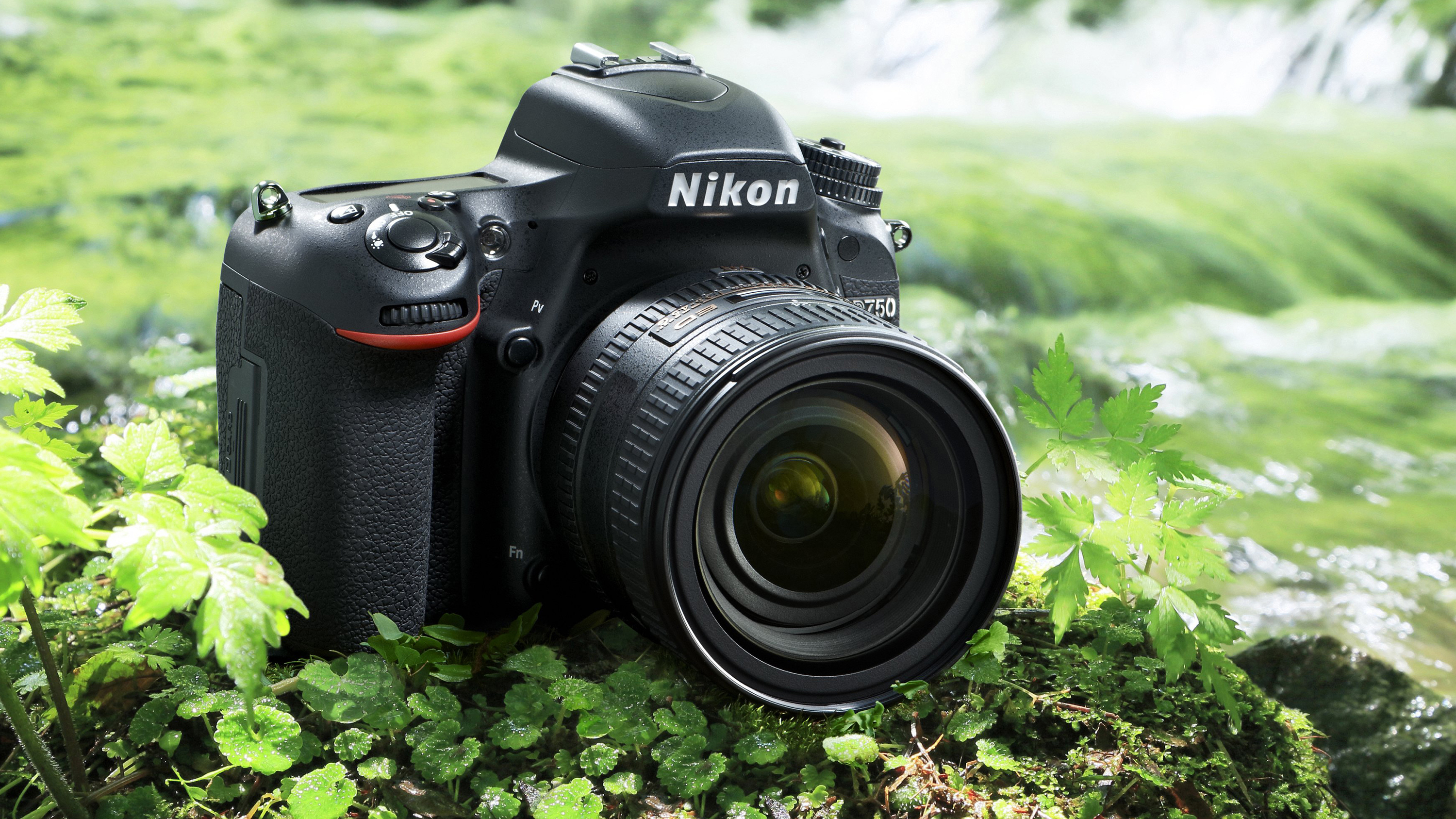
With the recent launch of the Nikon D780 (above), should full-frame fans still consider the D750? The answer is yes, because the D780 isn't a replacement for this camera, more a pricier alternative for those who want the latest mirrorless tricks in DSLR form.
If you're looking for a good value full-frame DSLR that's almost half the price, then this 24MP model remains a great option. That sensor still produces top-quality results, particularly at high ISO settings, and you also get a very decent 6.5fps continuous shooting speed, together with a handy tilting screen.
As it's an older model, there's no 4K video or a touchscreen, but if you don't need these, then the D750 offers very good value that lets you put extra money towards a lens or two.
- Read our in-depth Nikon D750 review

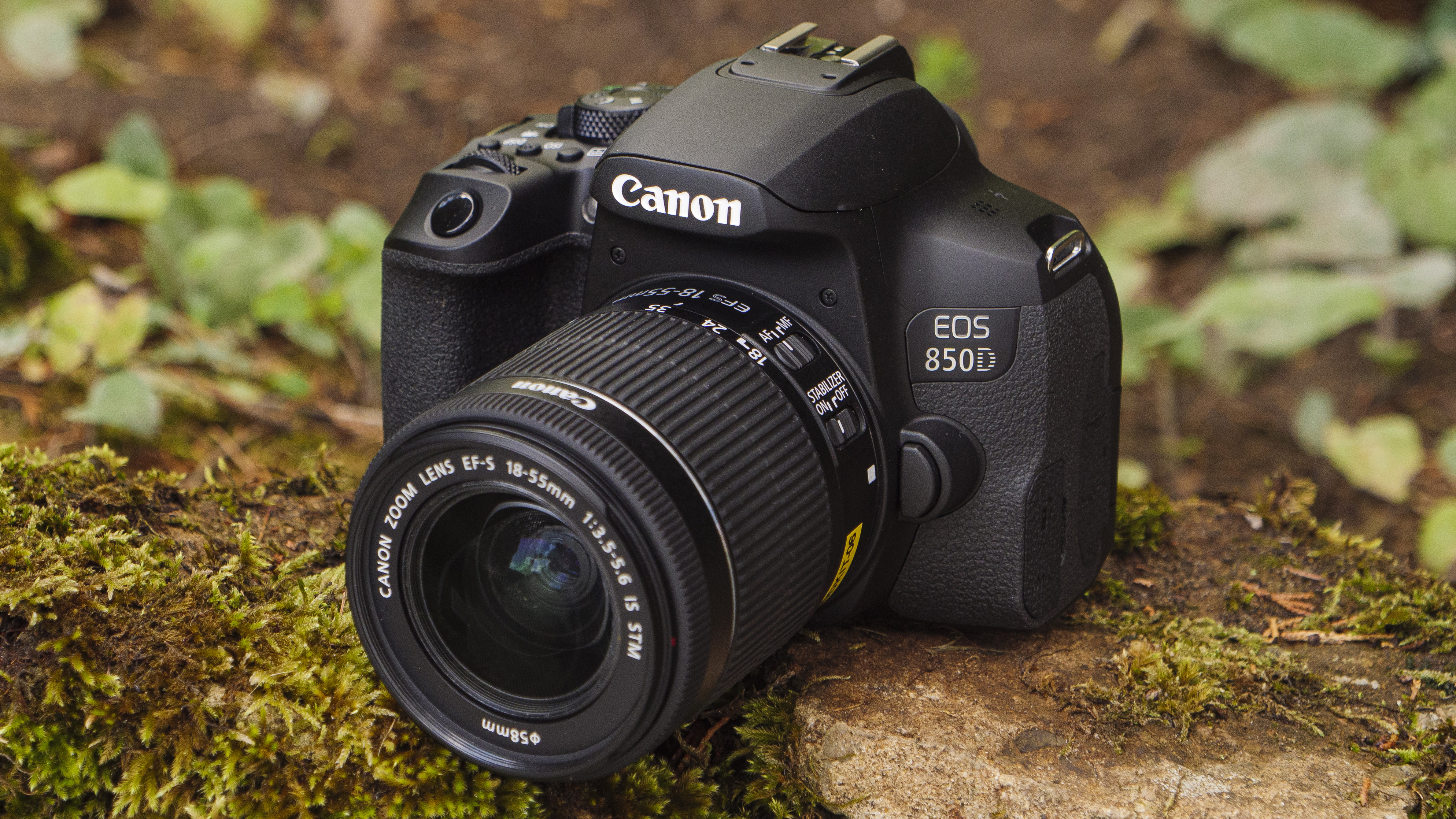
The Canon EOS Rebel T8i (know as the EOS 850D outside the US) is the successor to one of our favorite DSLRs for beginners. And while it's not a radical leap forward from the Rebel T7i / EOS 800D, a camera that's now difficult to find, it does offer a near-identical shooting experience that's built around Canon's excellent Dual Pixel phase-detection AF system.
The versatile, vari-angle LCD screen and comfortably familiar button layout make it a breeze to shoot with, and you also get 800 shots per charge when shooting with the viewfinder. The only real downside is that the 4K video mode still involves a crop and the loss of phase-detection autofocus, which means this is still very much a camera for 1080p video.
If you don't mind that and prefer the advantages of DSLRs, including battery life and handling, then the Rebel Ti / EOS 850D is a fine choice to kick off your photography hobby.
- Read our in-depth Canon EOS Rebel T8i / EOS 850D review

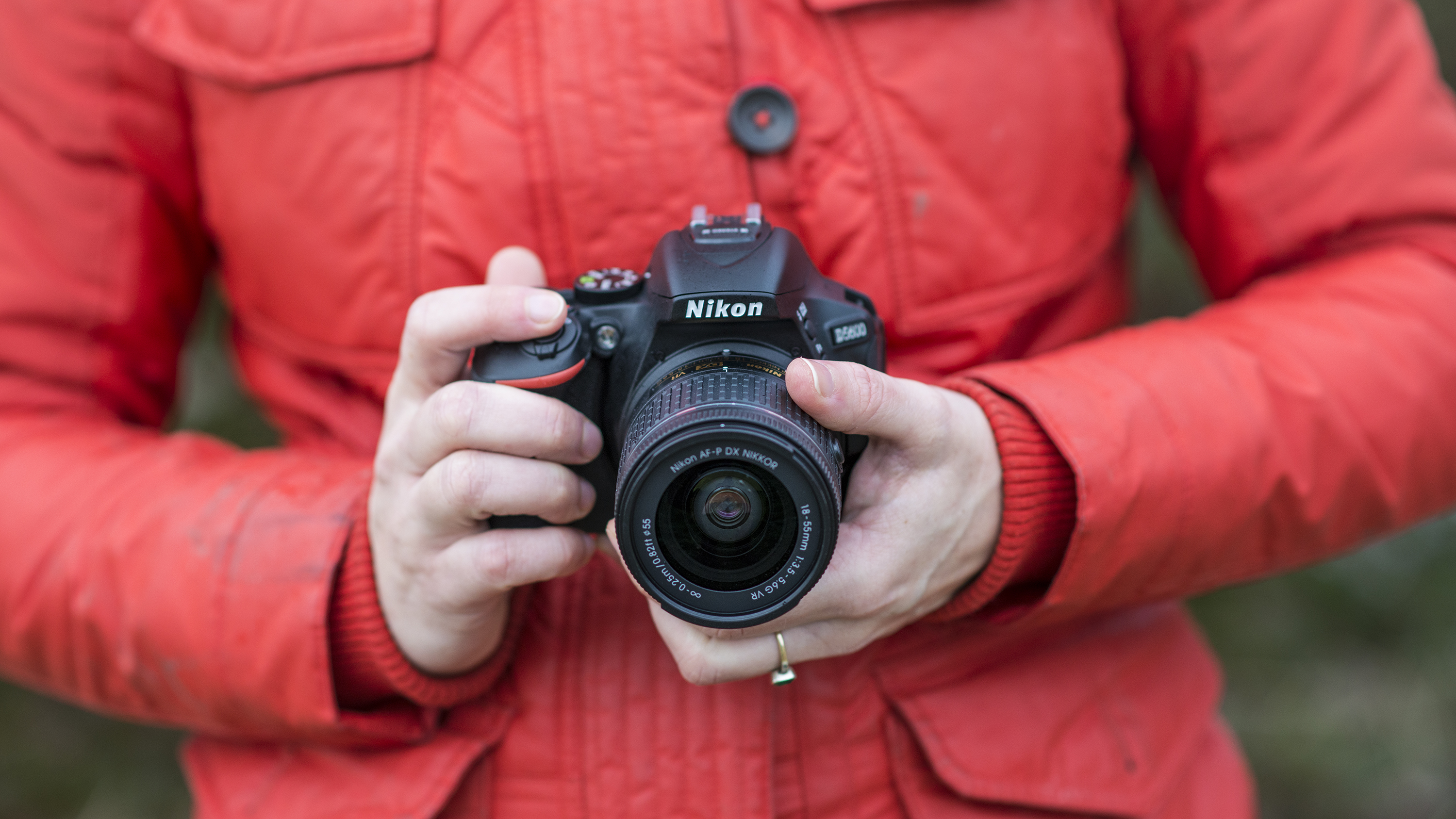
Launched in 2018, the well-equipped Nikon D5600 remains an appealing mid-range package for both beginners and more experienced users. It might lack a stand-out skill, but its combination of a 24.2MP sensor, an articulating touchscreen, a decent 39-point AF system and neat proportions mean it’s still well worth a look.
The D5600’s polycarbonate shell fits nicely in the hand and is comfortable to grip, while the streamlined button layout proves uncluttered and easy to use. The articulating touchscreen is less effective for autofocus control, but flick to the viewfinder and you’ll find the AF system solid, fast and accurate.
With the same sensor as the D5500 before it, images are reliably excellent. The high resolution offers plenty of detail, while images captured at lower ISO sensitive are clean, with little noise – and it’s only at ISO6400 that quality starts to suffer. Dynamic range is also impressive, aided by a matrix system that copes well with a range of lighting situations.
And while 5fps burst shooting isn’t as fast as mirrorless rivals, an 820-shot battery life towers over most. So, while no single feature of the D5600 will blow you away, it’s nevertheless a solid all-rounder that’s more affordable than ever.
- Read our in-depth Nikon D5600 review

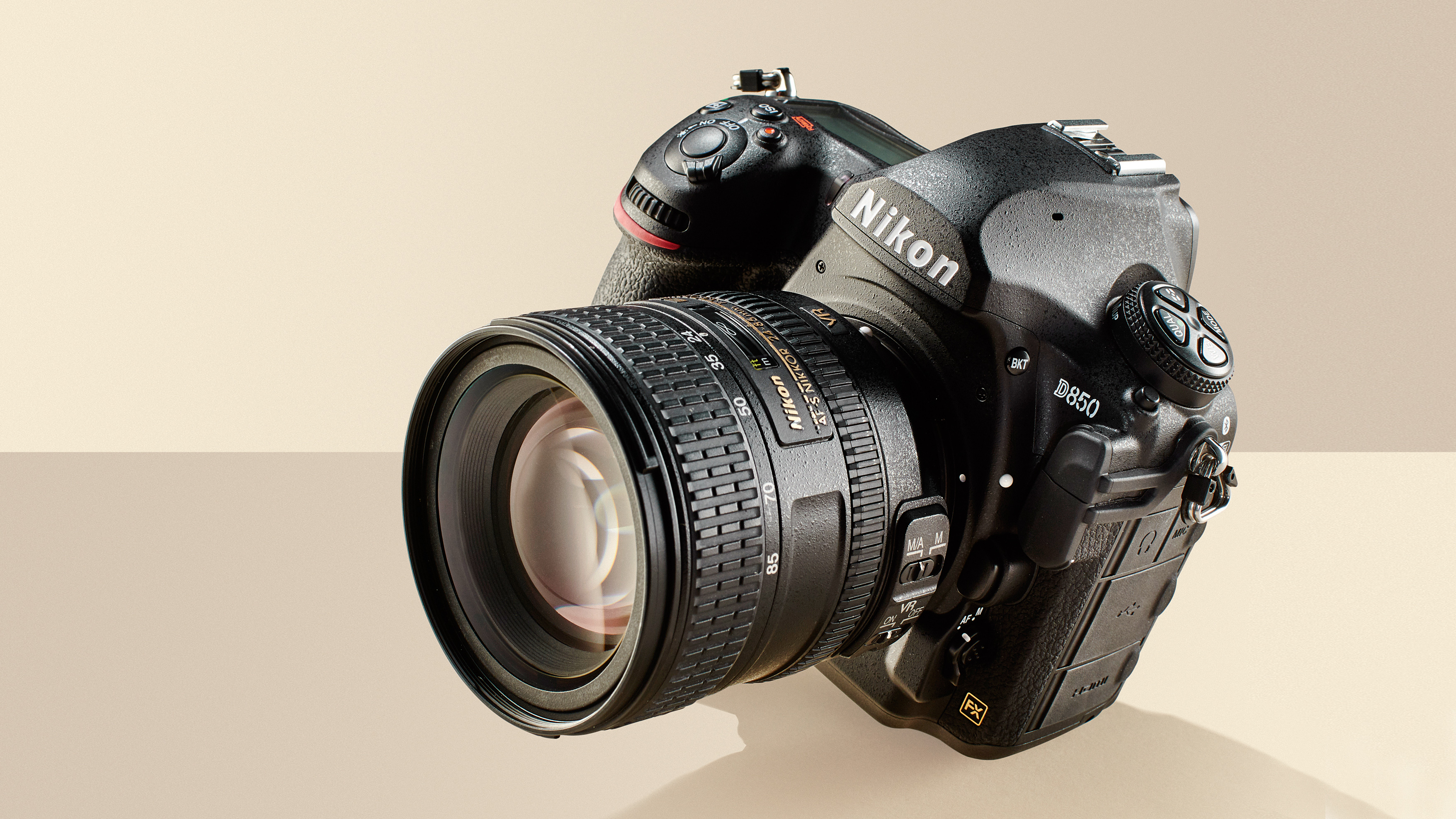
It's hard to think of another DSLR that wows like the D850 does, even after several years on the market. It's on the pricey side for sure, but this is justified by excellent image quality, bags of features and a rugged, weather-resistant magnesium alloy body. The 45MP sensor is still one of the highest in terms of resolution in any DSLR, while the 7fps burst mode is unusually high for a camera with such a sensor.
Add to that a cracking AF system, wonderful handling and great 4K video, and its versatility should be easy to appreciate. Like the sound of the D850, but want to go mirrorless? Well, while not strictly a mirrorless version of the D850, Nikon's newer Z7 mirrorless camera shares the same 45MP resolution as the D850, but features some clever tech of its own, including an all-new lens mount.
- Read our in-depth Nikon D850 review

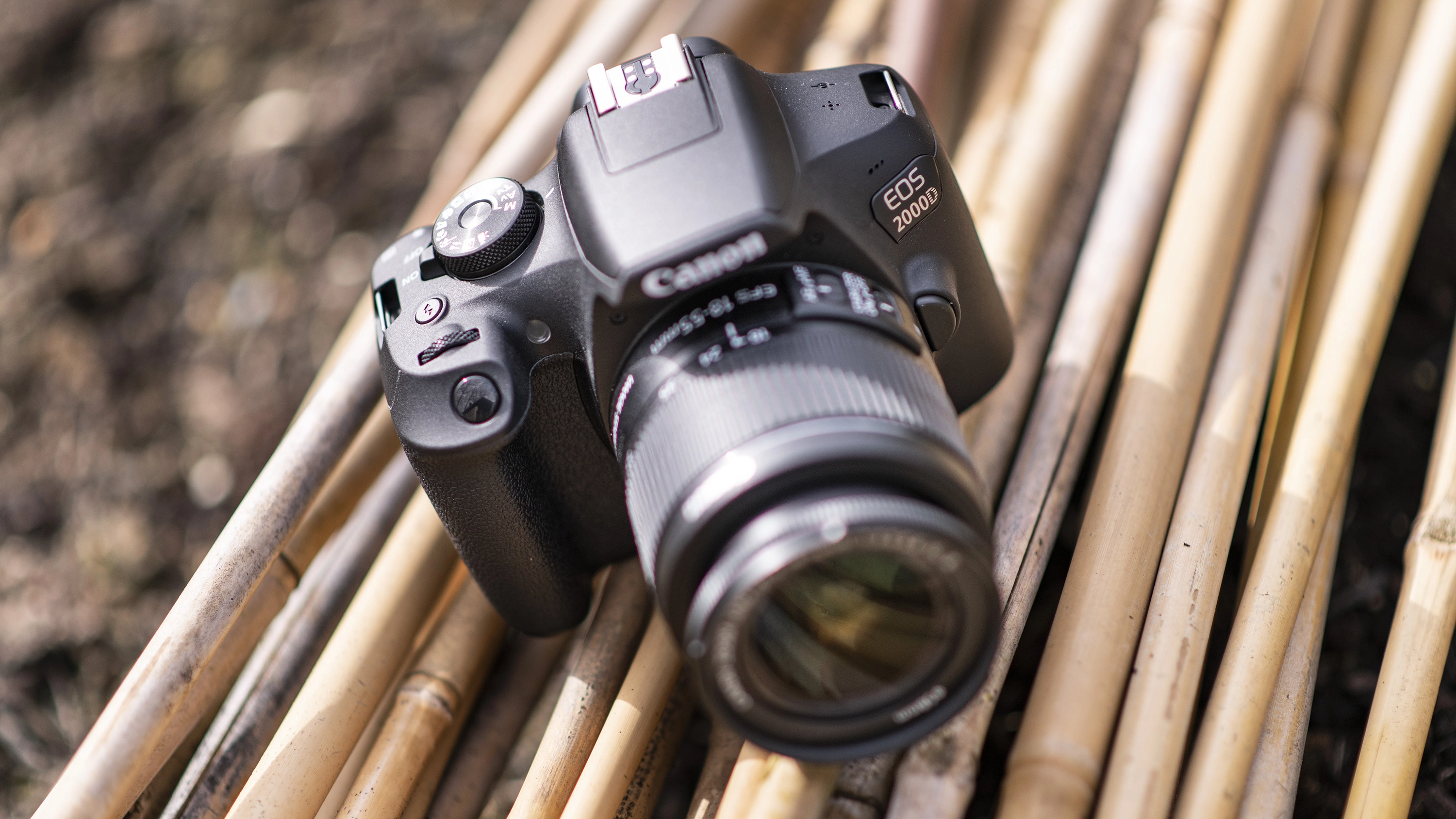
If you’re buying your first DSLR camera on a tight budget, a simpler, slightly older model is the way to go. Canon’s entry-level EOS Rebel T7 (known as the 2000D outside the US) fits that bill: the specs won’t blow anyone away, but it’s easy to use, gets the basics right and, because it’s a few years old, offers fantastic value.
There are several compromises, of course. Burst shooting is limited to a lazy 3fps and the dated autofocus system features just nine points. Live View focusing is sluggish and you’ll need to look elsewhere if you want a touchscreen. And, as you’d expect, the plasticky shell does not feel premium.
But there are good points for beginners, too. The control layout is logical and easy to use, and battery life is solid. There’s video recording too, albeit limited to 1080p. More importantly, the 24.1MP sensor produces images with a good level of detail and decent dynamic range, while noise-handling performance is solid.
If you’re looking to buy a good DSLR on a shoestring, the EOS Rebel T7 / 2000D is well worth considering.
- Read our in-depth Canon EOS Rebel T7 / 2000D review

Also consider...
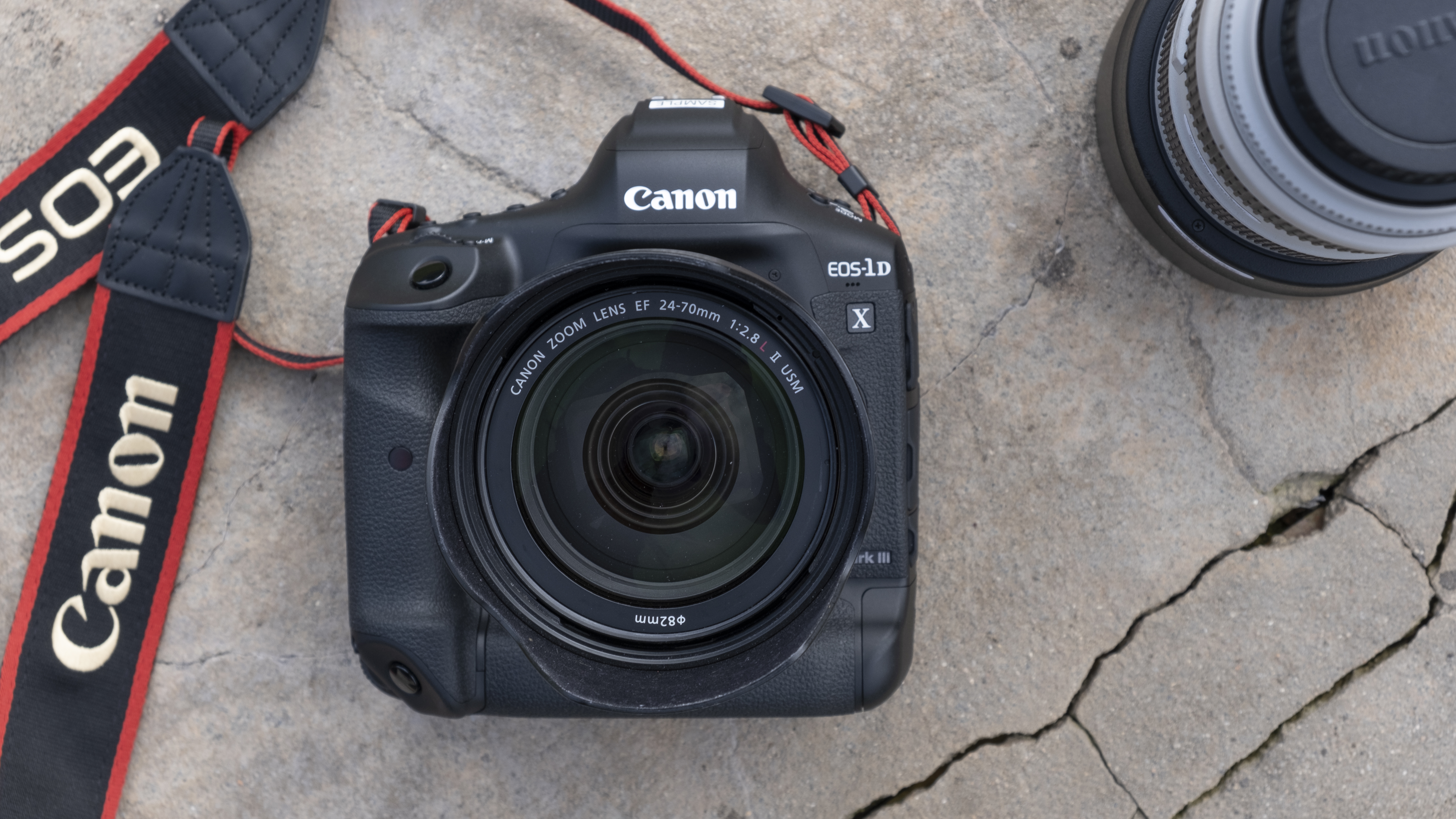
If we're talking about the best DSLRs, then it's hard to walk past Canon's latest and greatest – the EOS 1D X Mark III. Designed specifically for the pros who need speed, performance and quality together in one neat package, the 1D X Mark III pretty much covers all it all. It can easily handle any situation you want, whether in the sports arena, shooting wildlife or for a photojournalist in a war zone. A rugged body, blitzing 20fps burst speed, and AF system that can rival Sony's and image quality that really doesn't need a lot of post-production editing. And if you thought it was meant only for stills, think again. Its video prowess is handy too, with 4K/60p capture available on board. The only downside? It's expensive (and possibly overkill) for the average photographer, but a worthy investment for a professional.
- Read our in-depth Canon EOS 1D X Mark III review

Alternatively: budget classics
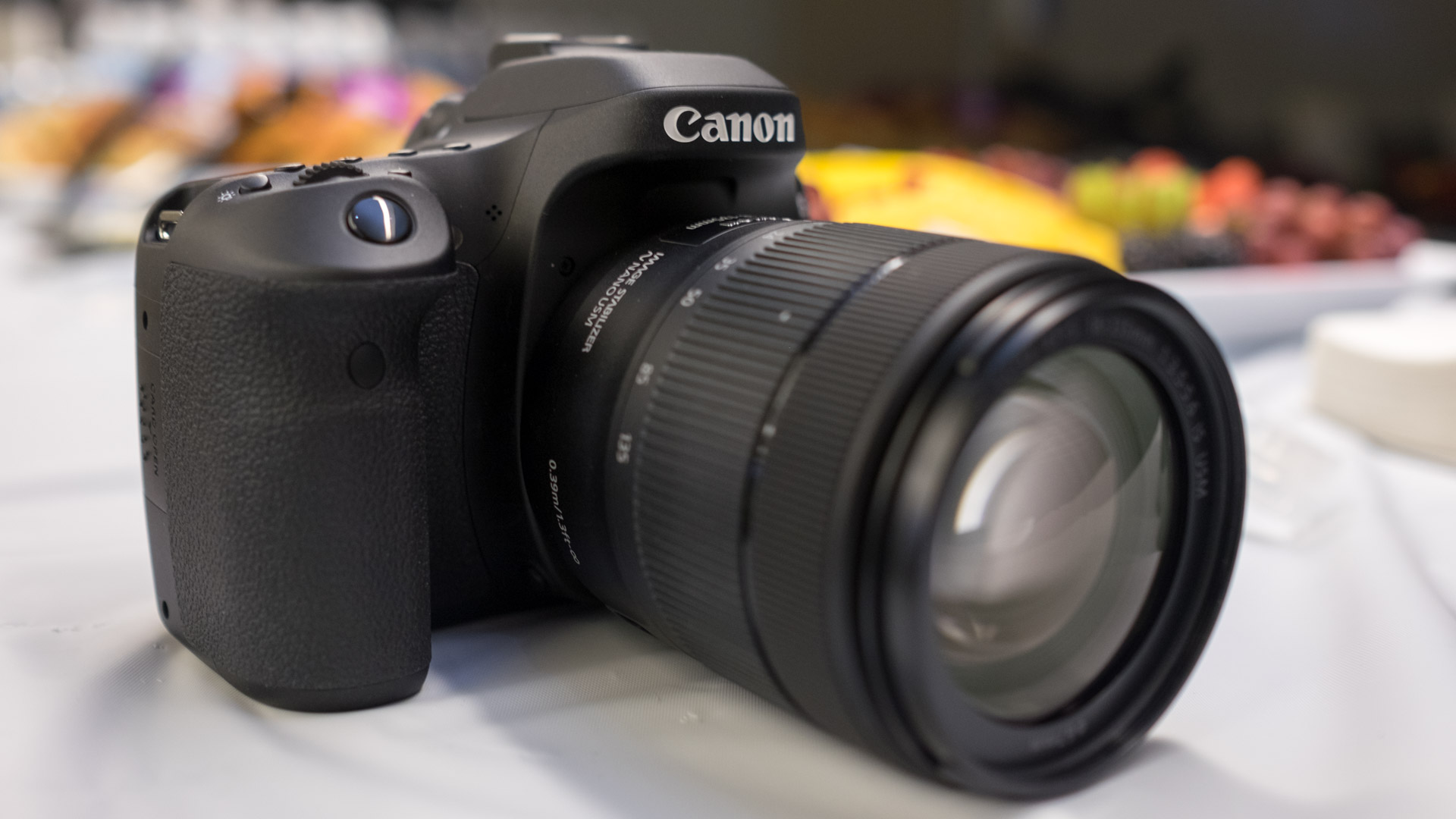
The more recent Canon EOS 90D (see no.2 above) is undoubtedly the better and more modern DSLR. But if you're looking for a mid-range option on a budget then it's EOS 80D predecessor is worth keeping an eye out for. This 2016 model is tricky to find new now, but if you find a restored or second-hand model, you'll be rewarded with impressive quality from the 24.2MP sensor, which is ably backed up by a 45-point autofocus system. The latter is by no means cutting-edge, but it'll ensure that you mostly get hits and can focus reliably in most situations. Throw in a guided menu system, and you have a good option for beginners looking for a camera they can grow into. A word of warning though: the 80D's kit lens is a little soft in the corners, so we'd aim to buy it body-only and pick up a zoom lens separately.
- Read our in-depth Canon EOS 80D review

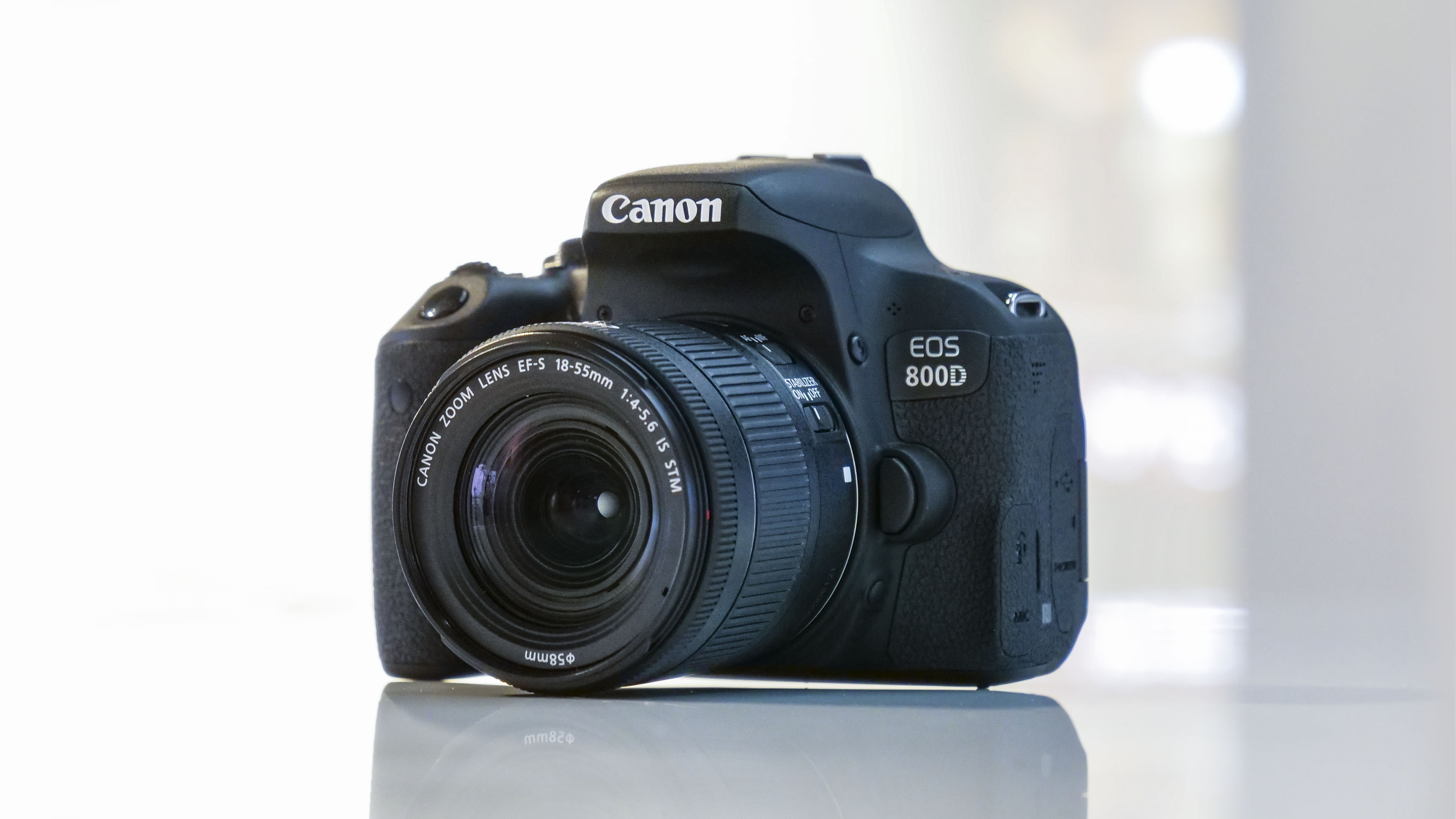
It might be over four years old, but Canon’s entry-level Rebel T7i (or EOS 800D outside the US) is still a very solid option for beginners. Some of its specs look a little dated next to the latest mirrorless options, such as 6fps burst shooting and video that maxes out at 1080p, but the Rebel T7i nevertheless offers plenty for photographers who are keen to get to grips with the heft and handling of a DSLR.
Its plastic finish definitely feels entry-level, but the Rebel T7i is solidly built with a nice, deep handgrip. It also serves up a user-friendly interface and excellent touchscreen control that make it a handy for experimenting with manual modes. Dual Pixel autofocus is also a highlight, performing reliably for Live View photography, while image quality overall is impressive – even if dynamic range could be better.
Add stellar battery life to the mix and the Rebel T7i shapes up as a stellar starter DSLR for stills shooting. It’s also better value than the newer EOS Rebel T8i / EOS 850D, which delivers modest upgrades for a not-so-modest price hike.
- Read our in-depth Canon EOS Rebel T7i / 800D review

What should you look for when buying a new DSLR?
A DSLR remains the cheapest way to get a camera with interchangeable lenses and a viewfinder (you’ll find many entry-level mirrorless cameras don’t have viewfinders). But what else should you consider when choosing one?
The main differences between an entry-level DSLR and a more advanced one are usually in the camera’s design, sensor and shooting features. Beginner DSLRs like the Nikon D3500 are often smaller than their more premium equivalents, which might be important to you, though this usually means a lack of weather-proofing and fewer manual controls.
The size difference is often also related to sensor size. More affordable DSLRs tend to have APS-C size sensors, while pro-friendly ones like the Nikon D850 are full-frame cameras. There is no outright ‘better’ sensor size, with each having their own advantages and drawbacks. To find out more about these, check out our Full-frame cameras: do you really need one? feature.
Not sure how to decide between a beginner DSLR and a mid-range model? Paying a bit more for the latter will usually get you increased shooting flexibility, which could see you keep the camera for longer and save you money in the long run. The extra features you tend to get are improved continuous shooting speeds (handy for shooting sport or wildlife), superior high ISO performance (useful in lower light), and sometimes an extra memory card slot.
If you’re just looking to step up from your smartphone or point-and-shoot camera, though, then an entry-level DSLR will give you the image quality boost and manual controls you need to grow into your new hobby. Finally, a quick word of advice if you don’t have any lenses – buy your new DSLR with a kit lens, as it’s cheaper to do this than buy them separately.
How we test cameras
Buying a camera these days is a big investment, so every camera in this guide has been tested extensively by us. These days, real-world tests are the most revealing way to understand a camera's performance and character, so we focus heavily on those, along with standardized tests for factors like ISO performance.
To start with, we look at the camera's design, handling and controls to get a sense of what kind of photographer it's aimed at and who would most enjoy shooting with it. When we take it out on a shoot, we'll use it both handheld and on a tripod to get a sense of where its strengths lie, and test its startup speed.
When it comes to performance, we use a formatted UHS-1 card and shoot in both raw and JPEG (if available). For burst shooting tests, we dial in our regular test settings (1/250 sec, ISO 200, continuous AF) and shoot a series of frames in front of a stopwatch to see if it lives up to its claimed speeds. We'll also look at how quickly the buffers clears and repeat the test for both raw and JPEG files.
In various lighting conditions, we also test the camera's different autofocus modes (including Face and Eye AF) in single point, area and continuous modes. We also shoot a range of photos of different styles (portrait, landscape, low light, macro/close-up) in raw and JPEG to get a sense of metering and its sensor's ability to handle noise and resolve fine detail.
If the camera's raw files are supported by Adobe Camera Raw, we'll also process some test images to see how we can push areas like shadow recovery. And we'll also test its ISO performance across the whole range to get a sense of the levels we'd be happy to push the camera to.
Battery life is tested in a real-world fashion, as we use the camera over the course of the day with the screen set to the default settings. Once the battery has reached zero, we'll then count the number of shots to see how it compares to the camera's CIPA rating. Finally, we test the camera's video skills by shooting some test footage at different frame-rates and resolutions, along with its companion app.
We then take everything we've learned about the camera and factor in its price to get a sense of the value-for-money it offers, before reaching our final verdict.

- Best camera
- Best camera for beginners
- Best DSLR
- Best mirrorless camera
- Best 4K camera
- Best full-frame camera
- Best compact camera
- What camera should I buy?
- Mirrorless vs DSLR: 10 key differences
- Camera rumors

from TechRadar - All the latest technology news https://ift.tt/3dwjEiJ
Aucun commentaire: